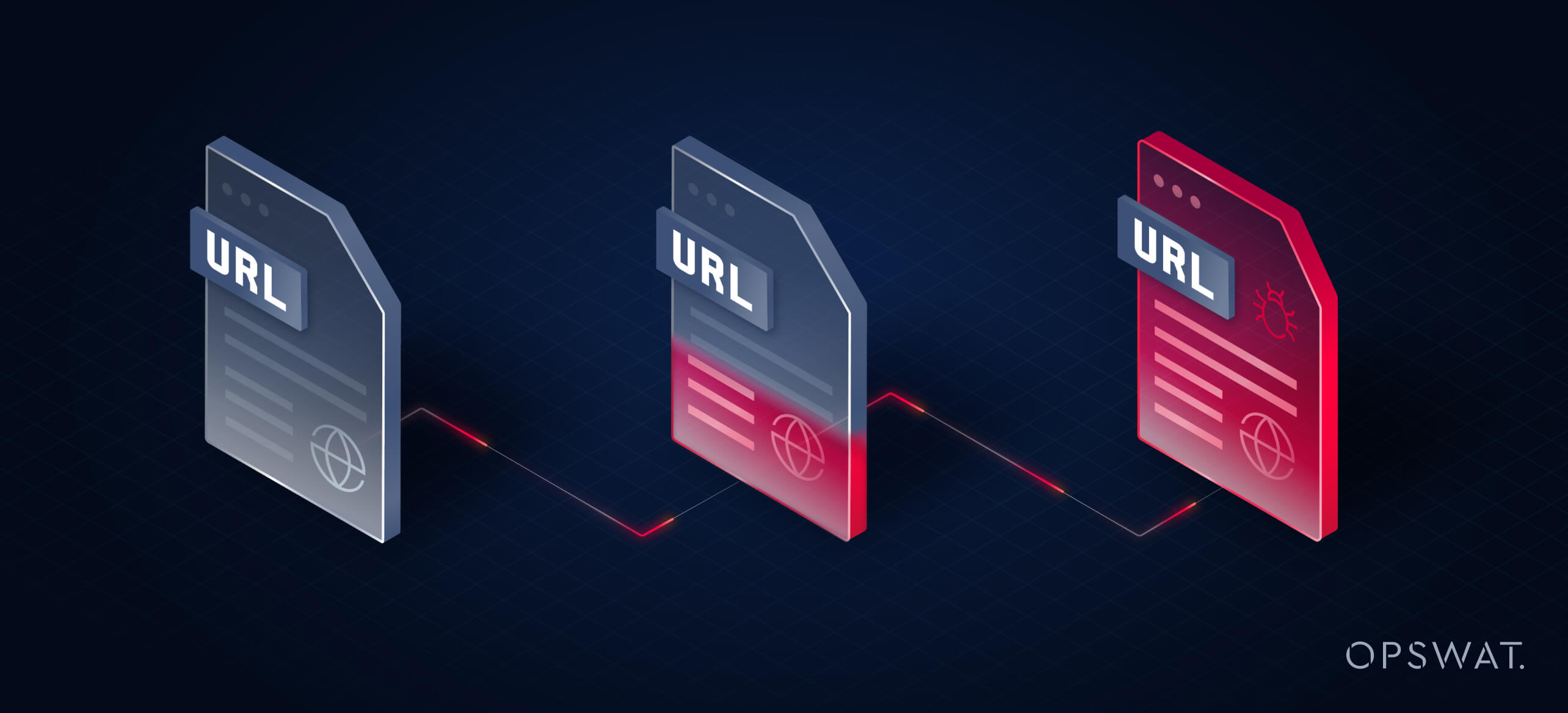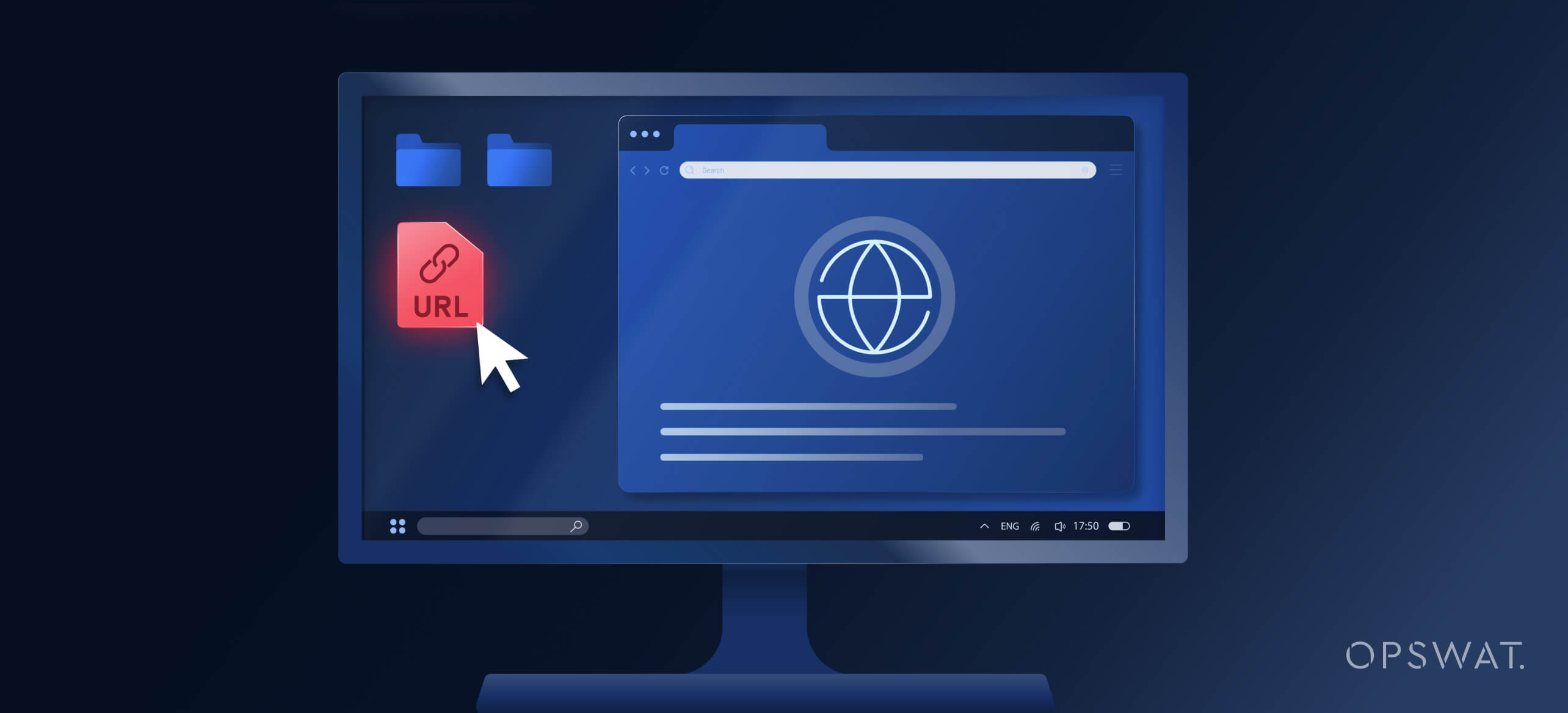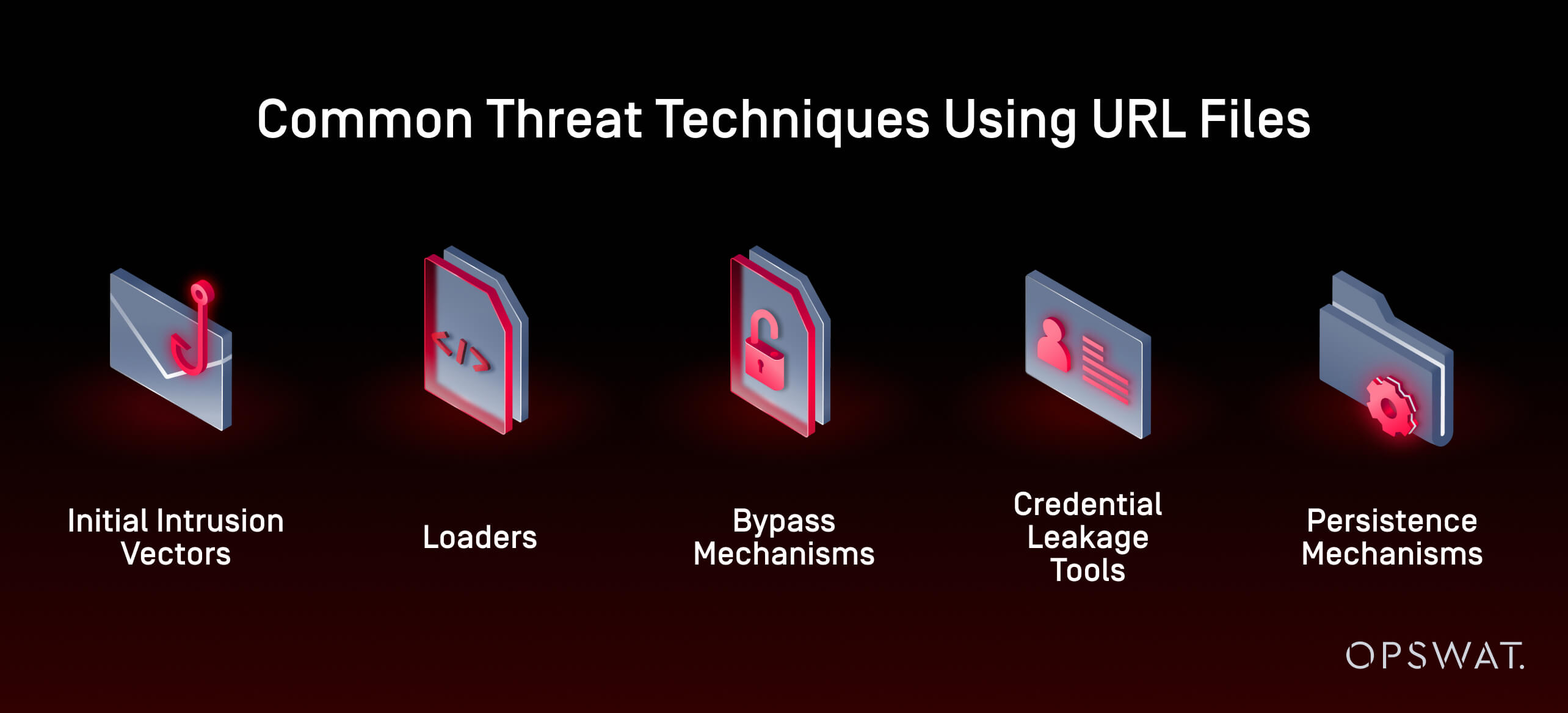Internet Shortcut files — commonly referred to as URL files — may appear mundane at first glance. But over the years, these simple text-based Windows artifacts have evolved into powerful enablers for multi-stage malware campaigns. Their low complexity, combined with specific operating system behaviors and overlooked security gaps, have allowed adversaries to quietly weaponize them in new and dangerous ways.
This article, the first in a three-part series, explores the resurgence of URL files in the threat landscape from a theoretical and strategic intelligence perspective. We’ll cover their structure, historical abuse cases, and why modern threat actors increasingly rely on them in file-based attack chains. Parts Two and Three will explore static and dynamic analysis perspectives — featuring OPSWAT's FileTAC and MetaDefender Sandbox, respectively.
Shortcut to Malice: URL Files
Internet Shortcut files, or URL files, present an interesting opportunity to reflect on how ordinary file types present security risks and become an enabling technology for criminal activity when coupled with the right vulnerabilities.
At OPSWAT, we specialize in adversaries’ abuse of complex, evasive file types for malicious ends, helping customers with solutions that are optimized to provide resilient countermeasures against cybersecurity threats. But not every weaponized file has to meet a high bar of complexity or sophistication to be a risk. Like gadgets in a ROP chain, some files are simple but provide value as a component in a threat sequence.

OPSWAT notes that increasing numbers of adversary groups are leveraging complex file tradecraft at a greater frequency as they target interests globally, as seen with both cybercriminal groups as well as strategically focused nation-state threat groups.
In this post, we’ll explore URL files, and the resurgence they’ve had in the threat space as various vulnerabilities and exposures have led to adversaries finding utility in this simple file type.
What Are URL Files?
URL files are a text-based file format that provides a similar function to other shortcut files, such as LNK (Shell Link) files, except that they’re designed to point to network resources, such as web URLs. The key use case for these files in Windows is saving a clickable shortcut on the user’s Desktop that can be opened to take them to a target URL or web application.

URL files are generally not a well-documented file format, being a legacy Windows Shell feature and having been a supported shortcut file type in Windows for a long while. The URL file format was unofficially documented at least as far back as 1998.
Internet Shortcut files are given the .url extension, leading to the nickname “URL files.” In reality, they are simple text-based files in the INI format, with a simple structure that can be extended through metadata and special data value encoding. Associated APIs are available in the operating system for creating and reading URL files.
The most basic file consists of a single header and the required URL property, for example:
[InternetShortcut]
URL=https://OPSWAT.com/
As seen in the example, a URL file can be very brief, and the only required section and option are [InternetShortcut] and URL. It is with this basic format in mind that we can begin to explore how the threat space around URL files has expanded over the years.
Why URL Files Matter in Threat Intelligence
Although URL files were introduced as a convenience feature in early Windows environments, they now occupy a unique position in adversarial toolkits. For many attackers, URL files serve as:

- Initial intrusion vectors in phishing and drive-by campaigns
- Loaders for second-stage payloads like .hta, .js, or .cpl files
- Bypass mechanisms for SmartScreen, MOTW, and other defenses
- Credential leakage tools via SMB beaconing or icon fetching
- Persistence mechanisms via autostart folder placement
In short: these files are no longer harmless conveniences — they are evolving attack surfaces.
Strategic Evolution of the Threat Landscape
The renewed focus on URL files highlights a broader trend in adversary behavior:
- Exploitation of overlooked file types: Attackers routinely shift toward formats that blend into enterprise environments.
- Complexity through simplicity: Rather than building entirely new malware, many threat actors chain together multiple file formats and OS features to achieve their goals.
- Nation-state adoption: As OPSWAT intelligence analysts have documented, even APT (advanced persistent threat) groups with deep technical resources have begun using simple file types like URL files to initiate sophisticated attacks — often as a low-signal component within larger campaigns.
This mirrors the reality of modern cyber threat intelligence: understanding attack components is just as important as tracking payloads or infrastructure.
Looking Ahead: Why URL Files Deserve Deeper Scrutiny
This introductory article laid the groundwork for understanding URL files as a class of threat-enabling artifacts. While they are rarely the star of an attack chain, their increasing use across cybercriminal and nation-state campaigns makes them vital to investigate.
In Part Two, we will break down the static characteristics of malicious URL files — including structure, metadata abuse, and evasion techniques — and show how OPSWAT’s FileTAC platform exposes threats through DFI (Deep File Inspection).
In Part Three, we will pivot to behavior: examining how these files behave at runtime, and how OPSWAT’s MetaDefender Sandbox dynamically detects execution paths, persistence attempts, and external communication tied to malicious URL shortcuts.
Stay tuned as we continue to explore how threat actors exploit the most unassuming file formats — and how OPSWAT helps organizations stay ahead of them.

